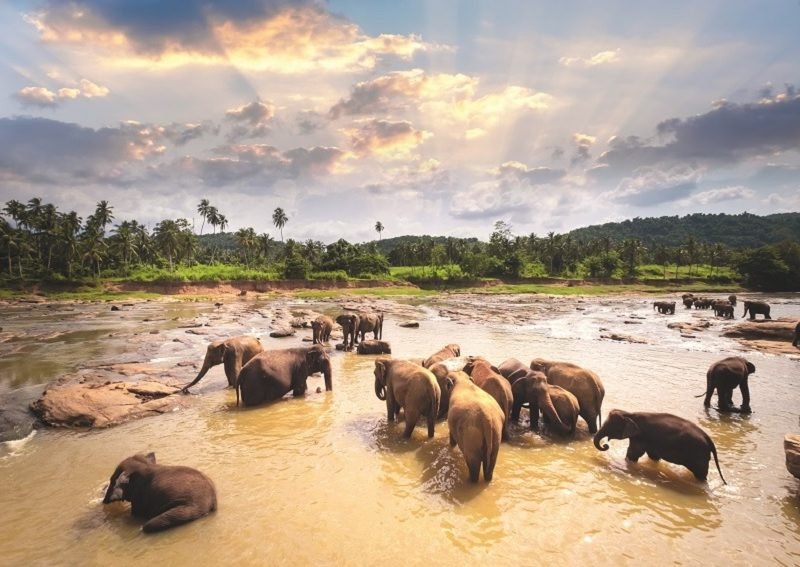Pinnawala
Pinnawala

Due to loss of habitats and fragmentation of forests, due to various activities such as development of agricultural projects, human encroachment to the forest for settlement and cultivation, construction of roads and railways. Elephants are in threat for their survival. Elephants are poached for their tusks and illegal trading are some of the causes for declining of population these giants in Sri Lanka. Baby elephants are being fallen into agricultural wells, drains and pits. The resultant Human Elephant Conflicts, which records the deaths of both the humans and elephants, is the greatest threat to Sri Lanka’s wild elephant population. As a result of anthropogenic activities a young animal were become orphans in the wild and for the conservation of such animals and institution was formed in 1975 under the Department of Wildlife Conservation.
Since 1983 the elephant orphanage has being governing by the Department of National Zoological Gardens. First captive birth of the orphanage had taken place on 05th July 1984. There are 78 elephants in orphanage now and there are 69 births in the orphanage and increase the number of elephants in the herd.Pinnawala Elephant orphanage is treated as one of the largest breading center in the world. Today the heard has grown up to 69 elephants. Among the many elephants of the orphanage there are three of them which will definitely get your attention.
Those who want to see the tamed and a semi wild elephant in close proximity the best place is the “Pinnawala Elephant Orphanage”. It is located northwest of Kegalle town along the Colombo -Kandy main road. The orphanage is in a beautiful greenish land with fruitful twenty five acre coconut land and having grasses over the underground near Maha Oya. The wide area of shallow water and the huge rocks of Maha Oya make the ideal place to these magnificent animals. Elephant Orphanage was established in 16th February 1975 by the Department of Wild Life Conservation. At the beginning of orphanage there were only five orphan baby elephants those who brought from different places of the island. From the inceptions to date, Neela, Wijaya, Kadira, Mathali and Kumari are some of babies that were brought to the facility still living in the orphanage. Since then orphan elephants brought to the orphanage from different parts of the island and brought up at the orphanage. They were fed with milk as well as array of fodder.
Pinnawala Elephant Orphanage
The orphanage was originally founded to provide care and protection to the many orphaned elephants found in the jungles of Sri Lanka. Pinnawala has the largest herd of captive elephants in the world
Pinnawala Elephant Orphanage can be reached via the A1 Colombo – Kandy main road. A turn off at the 82 km post at Kegalle and turn left at the karadupana junction and it’s leads you to the Pinnawala Elephant Orphanage.
The closest railway station is at Rambukkana 2km away from Pinnawala. The main site also has a few restaurants and refreshment stands, and management buildings, including sleeping shelters and Medical facilities. The elephant bathing and viewing area along the Oya River is directly opposite on the west side of the highway.
Tourists can observe the bathing elephants from the broad riverbank as the herd interacts socially, bathing and playing. The orphanage is open to the public daily, and all admission fees are used to look after the elephants. Visitors to the park can view the care and daily routine of the elephants, such as bottle feeding of elephant calves, feeding of all other elephants, and bathing in the Ma Oya (River).
